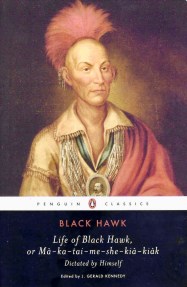
We met Ramses II in Cairo at the Egyptian Museum, introduced to us by Eman, who was guiding us around her country.
An imposing figure, Ramses the Great looms over modern day humans as they enter the museum. His muscular arms are straight by his side, his left leg extended in front of him and his hands clasping bars. On the end of those bars, his identifying “cartouches” are stamped. He also has them on his shoulders and one on his belt. They are on the stand below him.


They are there so that when his soul comes to rejoin his body after he is dead, the spirit will be able to identify him.
Ramses ruled for 66 years, long before term limits. He lived to be 90 years old, which is remarkable at a time when the life expectancy was much less. High infant death rates brought down the average life expectancy to 19 years. Even those who survived childhood lived but 30 years for women and 34 years for men. Cleopatra died at age 38. Tutankhamun, who became king when he was 9, died when 19.
The Ramses II standing at the museum door is not the man at the end of his 90-year life. Why would you want your soul to finally show up and unite with a guy wearing Depends?
The Ramses we met is probably about 34 years old, said Eman. What age would you choose?
The museum Ramses II is very much alive. His arms stretch beside his body. If they were crossed in front of his chest, he would be dead. Legs together, same thing. His beard straight? Alive. Beard bent? Dead. Beard missing? It’s the Sphinx, whose facial hair was plucked and hauled off to the British Museum in London.

As was the Rosetta Stone, the piece of rock that deciphered the hieroglyphics used by the ancient Egyptians.
Not that Great Britain is alone in traipsing off with antiquities from Egypt. The famous bust of Nefertiti’s head and face? The one which seems to have an eye missing? (Not so, says Eman. The wife of Akhenaten from 1353 to 1336 BC had an eye disease and the bust is accurate in how she appeared). I’d have a picture of it here except that Nefertiti is now in Berlin.
The missing obelisk from the Luxor Temple, the largest one erected by Ramses II, now stands in Paris. Seventy-five feet tall, weighing 250 tons and carted off in 1829. In return, France sent Egypt a clock that has never worked. If Ramses only knew what has happened to his obelisk, there would be more than a beard whacked off. Ramses was quite vocal, at least in stone, about what he liked to do to those who opposed him.

These thefts-by-agreements between those oppressed and those doing the oppressing are common in history. Twenty-four dollars for the island of Manhattan. Thirty pieces of silver for your Savior. Chances of ever getting the obelisk, Nefertiti or the Rosetta Stone back to Egypt are probably better than returning Manhattan to the Lenape Indians, but not by much.
Desecration was another form of wrecking the ancient structures of Egypt. Ramses II took stones from previous buildings to build his own, and scratching out the hieroglyphics, images and names of previous rulers made it easier to forget them and draw attention to those now in power.
Thievery and destruction didn’t start with the colonial period; grave robbing became a get-rich-quick scheme as soon as the tombs were sealed, pyramids built or temples erected. It was easier to steal limestone that once topped pyramids (see the top of the pyramid to the right of the Sphinx above) than to quarry new stones for the latest structure being built, whether another pyramid, a temple or a foundation for your new mud hut.
Egypt’s ancient treasures are now well guarded, which makes grave robbing difficult. But Egyptians are very good about using what been left behind by Ramses the Great and others to bring in new money. In 2019, 13 million tourists visited Egypt. In 2020, tourists spent $4.87 billion dollars in Egypt — during the COVID pandemic.
Much of that money goes to hotels, Nile cruise ships, food services and tour groups, but the man in the street — make that sand — has a chance to earn some too. At the Giza pyramids, you can buy rings, bracelets, scarves, scarabs, hats, T-shirts. You can rent horses, carriages. You can ride a camel — and we did (even though Kathy says they stink).

(Coming some time: More on Ramses the Great)










































